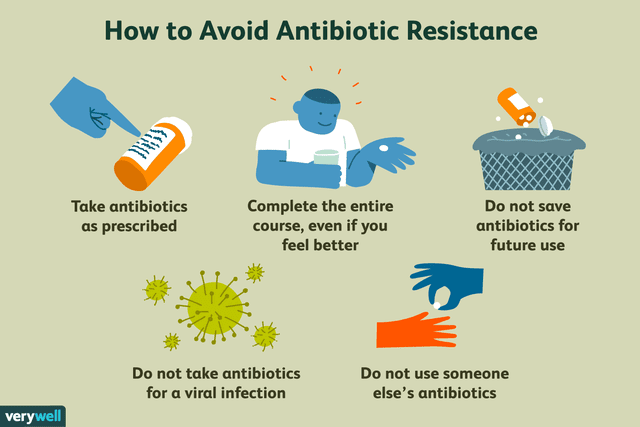Is Augmentin Better Than Amoxicillin?
Choosing the Right Antibiotic for an Infection
Medically reviewed by Elizabeth Molina Ortiz, MD
Amoxicillin and Augmentin (a combination of amoxicillin and clavulanate or clavulanic acid) are both antibiotics commonly prescribed to treat bacterial infections, but they are not the same medication. The important difference is that Augmentin contains a second active ingredient.
This means Augmentin is a better choice for some infections, while amoxicillin is better for treating others, and either can be used in some cases. The antibiotic a healthcare provider prescribes will depend on the type of bacteria and illness being treated (like a urinary tract infection, for example).
This article looks at the key differences between amoxicillin and Augmentin. It also discusses antibiotic resistance and how you can help prevent it.

Luis Alvarez / DigitalVision / Getty Images
Amoxicillin
Amoxicillin is often the first antibiotic prescribed for common bacterial infections. It accounted for 53.8 million prescriptions written for outpatients in the United States in 2018, leading the list ahead of Azithromycin and Augmentin, the third-most common antibiotic agent with 26.6 million prescriptions.
Uses
Amoxicillin is prescribed for bacteria that cause illness in children, such as ear, nose, and throat infections, including tonsillitis. This antibiotic also is the first drug of choice for:
Helicobacter pylori associated with ulcers
Takeaway
Amoxicillin can kill many of the same bacteria as penicillin, but it is less effective than penicillin against Streptococcus pneumococcus. This is the bacteria commonly associated with meningitis and systemic bacteremia.
Side Effects
The side effects of amoxicillin tend to be relatively mild. This is another reason it's often prescribed for kids. The most common ones include:
Dark or hairy tongue
Nausea and vomiting can occur but are much more common with Augmentin.
Allergic Reaction
Before prescribing amoxicillin, a healthcare provider needs to know any history of allergy to antibiotics like penicillin. Symptoms of an allergic reaction to amoxicillin include rash, itching, swelling of the face, tongue, and/or throat, trouble breathing, and dizziness. These can become life-threatening anaphylaxis, a severe allergic reaction requiring immediate care for which you should call 911.
Related: What Is Penicillin Used For?
Augmentin
Augmentin is amoxicillin combined with a beta-lactamase inhibitor called clavulanate. Clavulanate blocks the enzymes that contribute to antibiotic resistance.
The addition of a beta-lactamase blocker to amoxicillin allows Augmentin to overcome resistance to harder-to-treat bacteria. This means it can potentially treat more infections. It is for this reason that Augmentin is referred to as a broad-spectrum antibiotic.
Augmentin can treat the same bacteria as amoxicillin, but also is effective against certain harder-to-treat infections including:
Bacterial infections associated with COPD
Pneumonia
Takeaway
It should be noted there are a few infections for which amoxicillin and Augmentin are prescribed equally:
Pyelonephritis (kidney infections)
Erysipelas, a type of skin infection
Chronic strep "carriers"

DermNet / CC BY-NC-ND
ErysipelasThe most common side effect of Augmentin is diarrhea. Some people may also experience:
Vomiting
Rash
Augmentin has been associated with liver damage (and rarely liver failure), which occurs more often than it does with amoxicillin alone. This may be especially concerning in people with liver disease, such as hepatitis. Amoxicillin also may affect certain urine tests for glucose.
Related: What Is a Superbug Infection?
Antibiotic Resistance in Augmentin vs. Amoxicillin
If antibiotic resistance happens with a broad-spectrum antibiotic like Augmentin, you will be at greater risk of having multiple types of drug resistance. With a "narrow-spectrum" antibiotic like amoxicillin, the consequence may be less severe.
Resistance develops when an antibiotic you are using is unable to fully eradicate a bacteria in your body. This often occurs when you stop treatment before you are supposed to. When this happens, a few mutated bacteria may survive.
Some of these may be naturally resistant to the antibiotic you were taking. Because you didn't "hit the infection hard enough," these survivors now have the opportunity to multiply and become the dominant strain. As such, the next time you develop an infection, the antibiotic will not work anywhere near as well.
Takeaway
Antibiotics used indiscriminately may destroy "good" bacteria along with "bad," thereby altering the body's natural flora and allowing even worse bacteria to proliferate.

How to Avoid Antibiotic Resistance
Always take an antibiotic as prescribed.
Complete the entire course even if you feel better.
Do not save antibiotics for future use.
Do not use someone else's antibiotics.
Do not take antibiotics for a viral infection.
Avoid overuse. Take an antibiotic only if your healthcare provider deems it necessary.
Drug Interactions
Certain medications have the potential to interact with antibiotics. For example, people who take the anticoagulant drug Coumadin (warfarin) may need to have their dosage reduced when taking Augmentin or amoxicillin. Other drugs that may interact with Augmentin include:
Lopurin or Zyloprim (allopurinol) used to treat gout
Probalan (probenecid), also used to treat gout
CellCept (mycophenolate mofetil, or MMF), used with organ transplants
People taking methotrexate (typically for rheumatoid arthritis, but also for other conditions) may find amoxicillin interferes with absorption of the drug. And it's widely known that amoxicillin may limit the effectiveness of birth control pills, making another method necessary while taking the antibiotic.
Be sure to tell your healthcare provider about any vitamins and other supplements you take, too. It will help to ensure that they prescribe the most effective antibiotic, in the right dose, for your condition.
Related: Antibiotic Prescribing Guidelines
Summary
Amoxicillin and Augmentin are commonly prescribed antibiotics. Each is good at treating certain kinds of infections. A few infections can be treated with either drug.
Amoxicillin is often prescribed for common infections like those that cause ear, nose, and throat infections in children. Augmentin is usually reserved for harder-to-treat infections, such as those caused by bacteria that are resistant to antibiotics.
Whether you're prescribed amoxicillin, Augmentin, or another antibiotic, it's not so much the "strength" of the drug you should be concerned about. It's also about the safety, efficacy, and appropriateness of treatment. With any antibiotic, it is important to take it as prescribed and finish the complete course even if you feel better.
Read the original article on Verywell Health.

